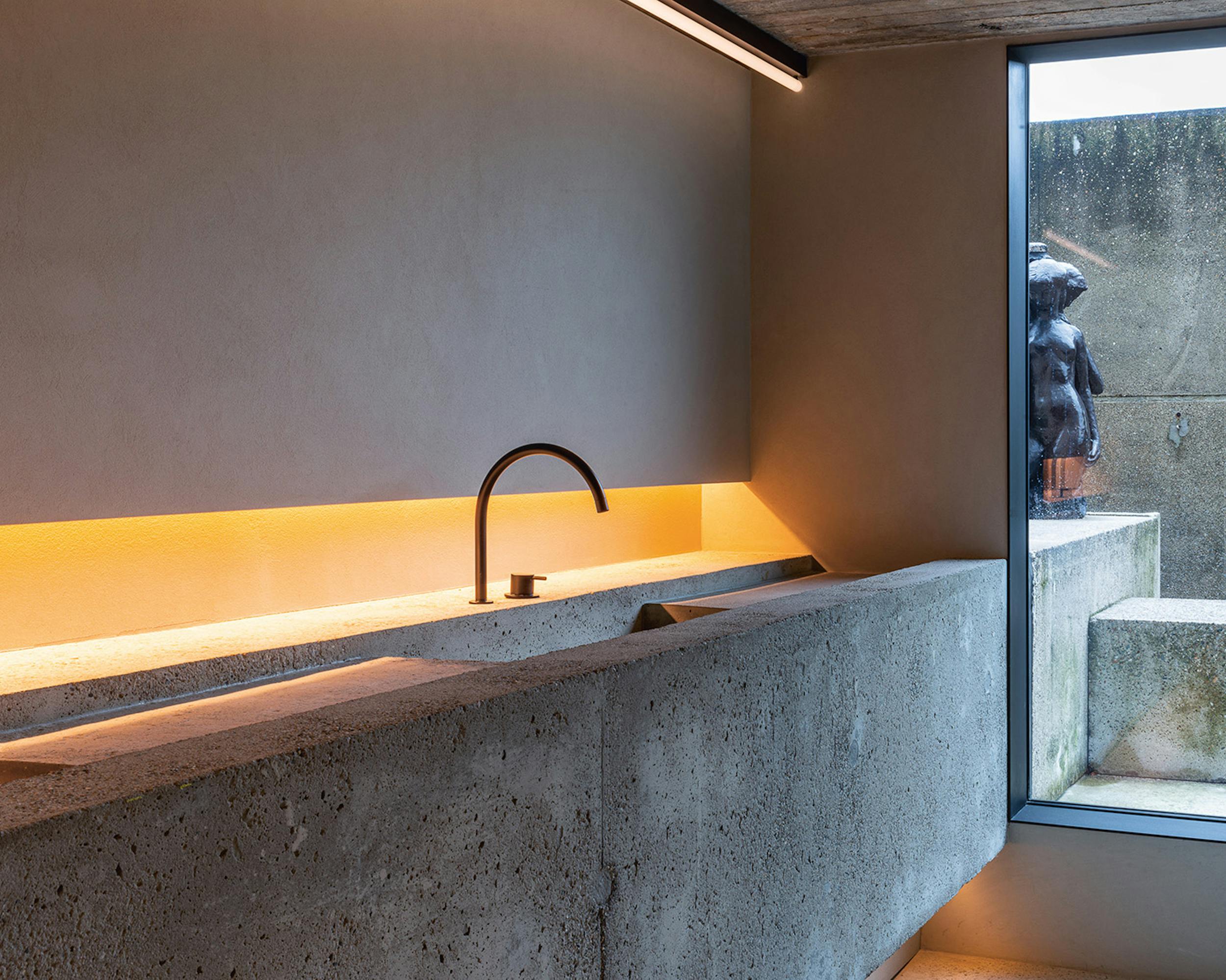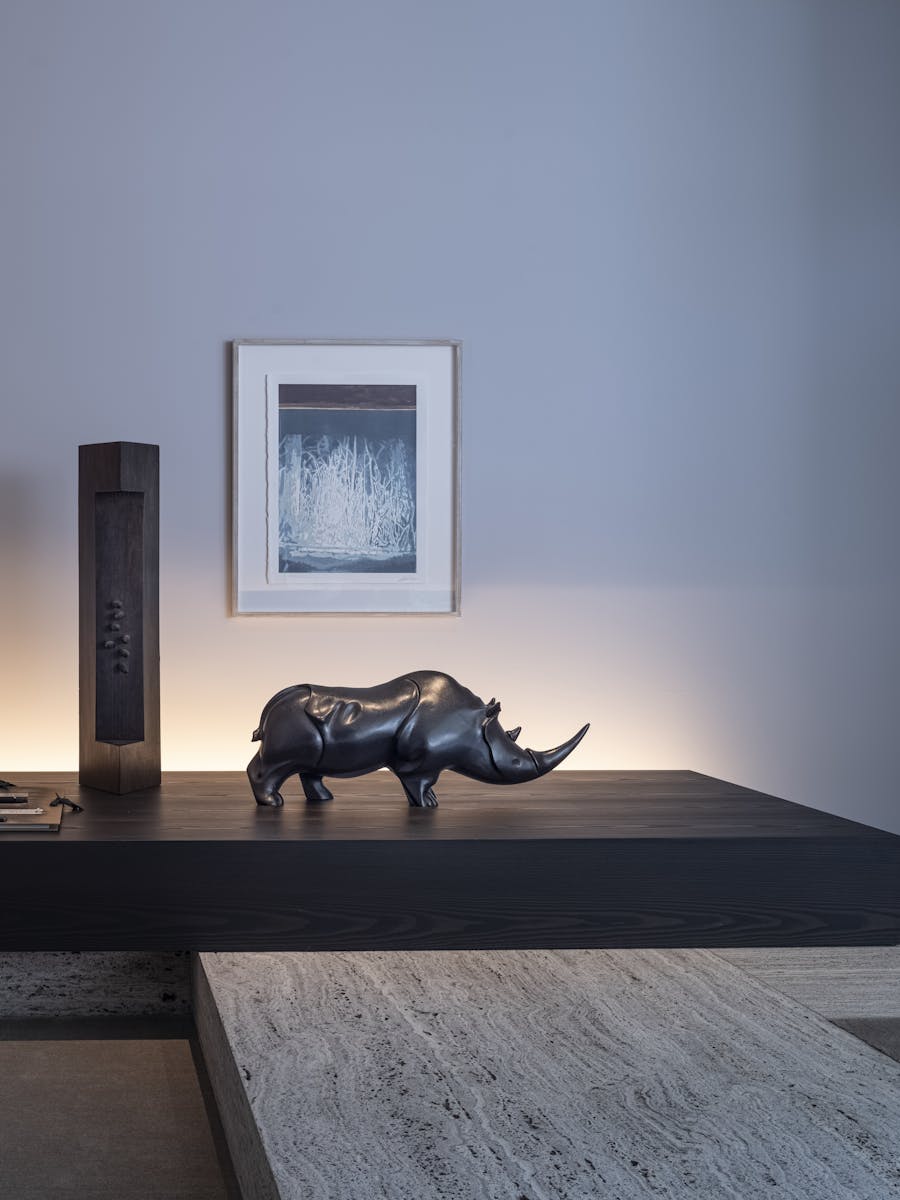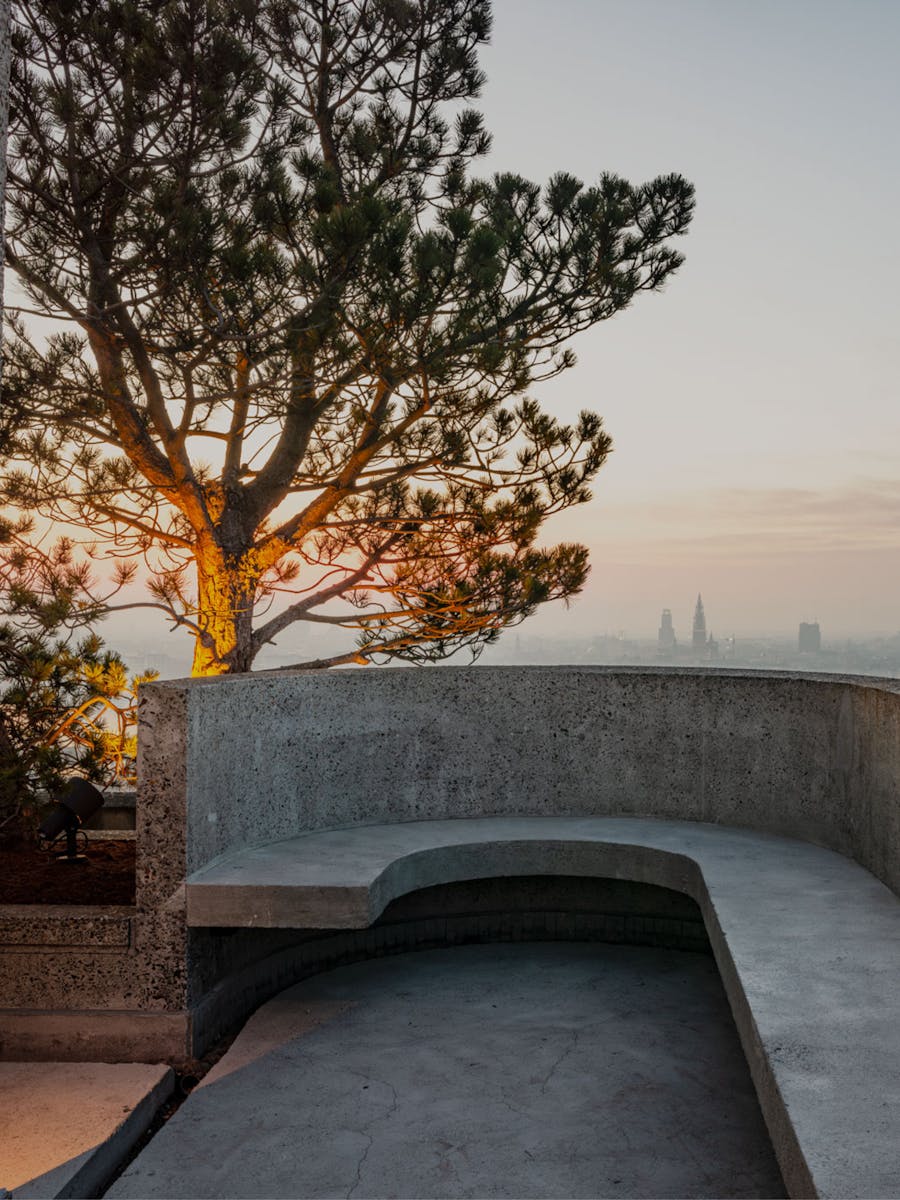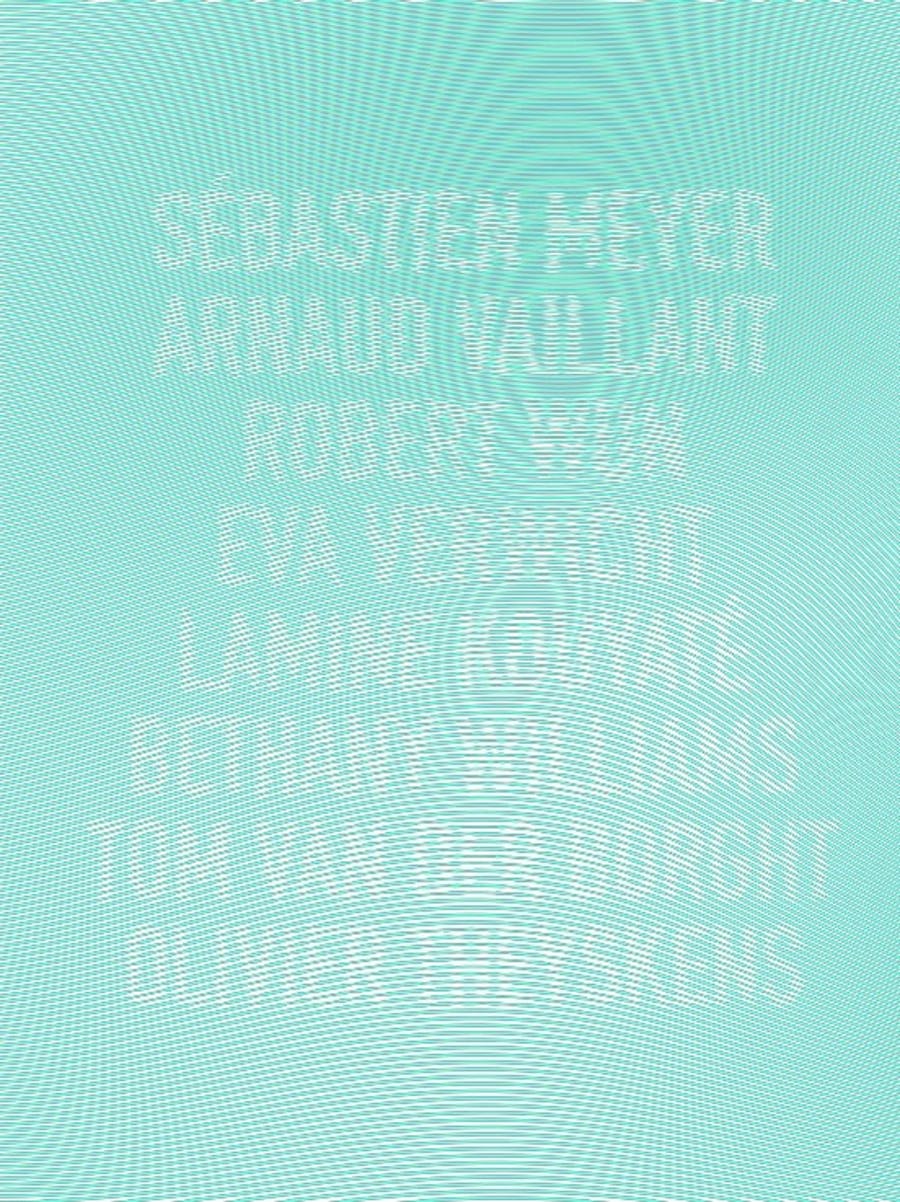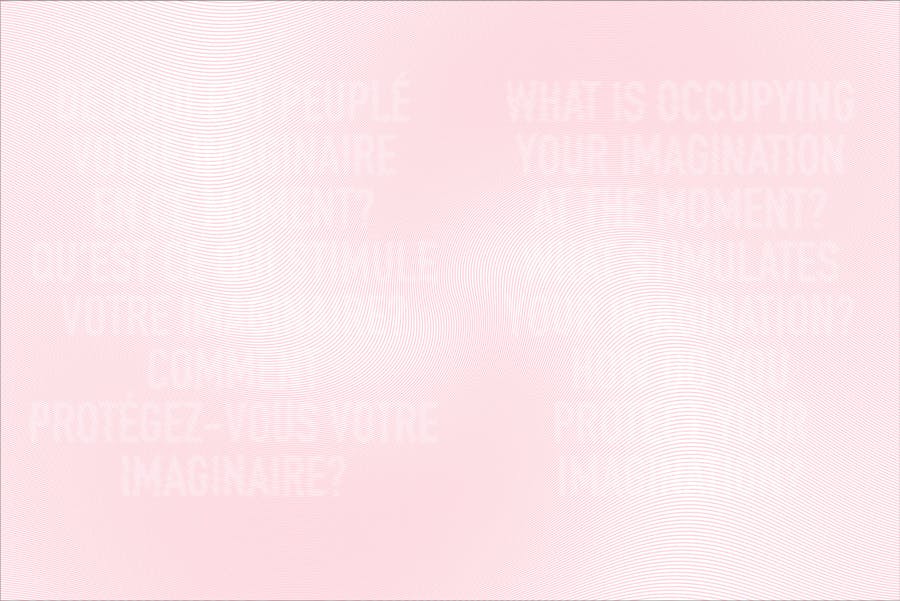From The Excess Issue
In forty years of career, the world-renowned architect Glenn Sestig has surrounded himself with the greatest contemporary minds. In this second interdisciplinary encounter, the architect meets the fashion scene with four emblematic figures : Pieter Mulier, Olivier Theyskens, Clémande Burgevin and Isolde Pringiers.
"As Coco Chanel once said: 'fashion is architecture, it’s a question of proportions'. Proportions and volumes, two of the major pillars of architecture, are essential in fashion too." — Glenn Sestig

At the helm of Alaïa's creative direction since 2021, Belgian Pieter Mulier speaks about his primary passion—architecture and design—and the synergies these disciplines have with fashion.
You studied architecture before being discovered by Raf Simons during your graduation collection in 2001. Would you have been an architect without that decisive encounter?
P.M. Probably. I have always been fascinated by this discipline, the relationship to forms, spaces, and how objects also find their place and interact with a location. But Raf showed me that fashion could be a field for free creation. By choosing me to work alongside him, he revolutionized the start of my career.
Can you tell us about your apartment, the Mulier Penthouse in the Riverside Tower
of Antwerp?
P.M. It’s an iconic building on Antwerp’s left bank. Built between 1967 and 1972 by architects Léon Stynen and Paul De Meyer, this tower stands out for its brutalist design and its integration of modernist principles inspired by Le Corbusier. At the top, Paul De Meyer built a penthouse offering an incredible view of the city and the river. When I had the chance to buy it, I asked Glenn Sestig to restore its essential character, its truth. Glenn enhanced this concrete structure, without doors, where the space itself provokes a natural movement, while respecting the original design.
Is this a place that inspires you?
P.M. It is the place I prefer, more than any other. With its stunning view of the river, the city and port lights, and the forest at its feet where I walk early in the morning with my dog. It is a place that protects and inspires me. I particularly enjoy working in the kitchen where the large windows open onto the garden, a green roof that crowns the concrete and gives it height.
How can architecture enhance the spirit of a house like Alaïa?
P.M. There is a continuity between clothing and space. Both express craftsmanship, identity, and vision through forms, materials, and lines.
What is the architectural identity of Alaïa?
P.M. Forms that are both pure and functional, enhancing the female body. Radical volumes that create movement and lines. In our latest collection, the omnipresent circular forms and lines evoke the curves of women’s bodies, as if to better celebrate this essential inspiration.
Like Azzedine Alaïa, who held his shows in his apartment on Rue de Moussy in the 80s, you hosted the Alaïa Summer/Fall 2023 show at your home.
P.M. It was a particularly important moment for me. There was a kind of truth, raw and unfiltered. A desire to share an intimate moment. Of course, it’s a nod to Alaïa’s origins, where the beauty of creation was something very intimate, familial, and friendly. Returning to the essence of the House, that of sharing and openness.
Is fashion a source of excess and passion?
P.M. I think that behind every creative gesture, especially in fashion, there is a passionate, excessive impulse. It then needs to be transformed.
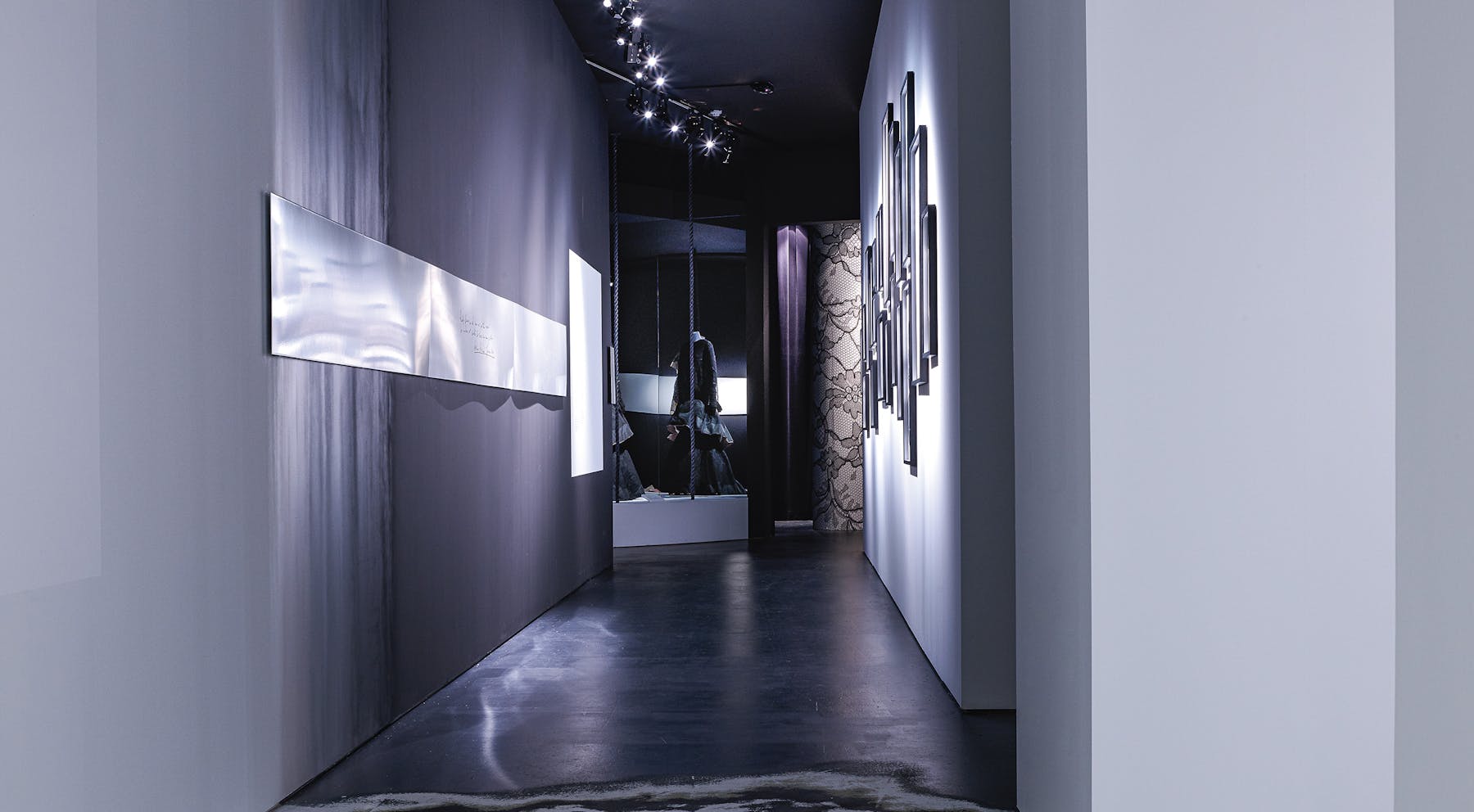
Between Neoclassicism and Minimalism, the black prince of late '90s couture sees architecture as another way to access beauty.
What are the links between fashion and architecture?
O.T. The flow of lines, the draping, the purity, the choice of materials, the bespoke nature... The architect and the designer have parallel approaches in their processes, accustomed to deadlines, the notion of service, and the idea of being an author and signing their work. They are artists, intellectuals, visionaries, utopians. Instinct often converses with reason, feeding their creative gesture. Realizing their ideas requires technical skill and experience, an essential know-how.
Can a fashion designer be inspired by the work of an architect?
O.T. Designers would benefit from considering more in their creations the concept of permanence inherent to the architectural gesture.
You created the scenography for your exhibition "She Walks in Beauty" with Glenn Sestig in 2018. Tell us about your collaboration with the architect.
O.T. This exhibition is one of the most beautiful experiences I have had the chance to share. Glenn created an environment within the museum space that evolved harmoniously with the major aesthetic milestones of my career. We allowed ourselves to completely tear down the museum, only to achieve an absolutely flawless result. The Sestig way.
The Sestig way?
O.T. Uncompromising, elevated, precise.
Why is scenography crucial to the success of an exhibition?
O.T. Visitors may come and go as they please, but 99% of the time, they quietly follow the path laid out for them. You need to create moments, revelations and pauses. The path transforms the visitor’s state of mind and experience.
If Olivier Theyskens were an architectural movement, what would it be?
O.T. A fusion of minimal Art Deco and Neoclassicism abandoned to nature and rusticity. A worn, repainted, luminous, and dark product of the 20th century. I love the romantic idea of expanding spaces and extending vanishing points. However, my melancholy makes me cherish nooks and shadows.

At Calvin Klein, under her mentor Raf Simons, and later at Hermès as the creative director of accessories, Clémande Burgevin Blachman shares her organic connection to objects and design.
Your parents were antique dealers at the Paul Bert Market at the Saint-Ouen flea market. What is your relationship to design and architecture?
C.B. It is an integral part of my environment. I need to live in spaces with a strong architectural history, surrounded by objects imbued with historicity, culture, and a specific aesthetic. My eye was trained throughout the decorative arts. As a child, my room was entirely Art Nouveau!
Like Glenn Sestig, are you a follower of modernist architecture and contemporary minimalist style?
C.B. There’s a deeply moving dialogue between nature and the raw surfaces,
like Le Corbusier’s Chapel of Ronchamp.
How would you define an accessory, a fashion object?
C.B. It’s an ornament, a piece of whimsy that must be functional and ergonomic while being unique and aesthetic. A paradox!
Would you describe yourself as an aesthete?
C.B. I’m not fond of self-proclamations. If we refer to the primary meaning, “someone who considers art as an essential value”, then yes.
Can fashion and architecture influence each other?
C.B. Yes, the latest show by Pieter Mulier for Maison Alaïa at the heart of the Guggenheim is a perfect example.
What is the place where you feel most comfortable creating?
C.B. A place that reflects who I am.
A project by Glenn Sestig that left a lasting impression on you?
C.B. Raf Simons’ space at Dover Street Market in London, which mixed the rawness of concrete with colorful displays. It was clever in its conception, timeless, and generous in its space, which in my view, perfectly describes Glenn’s aesthetic.
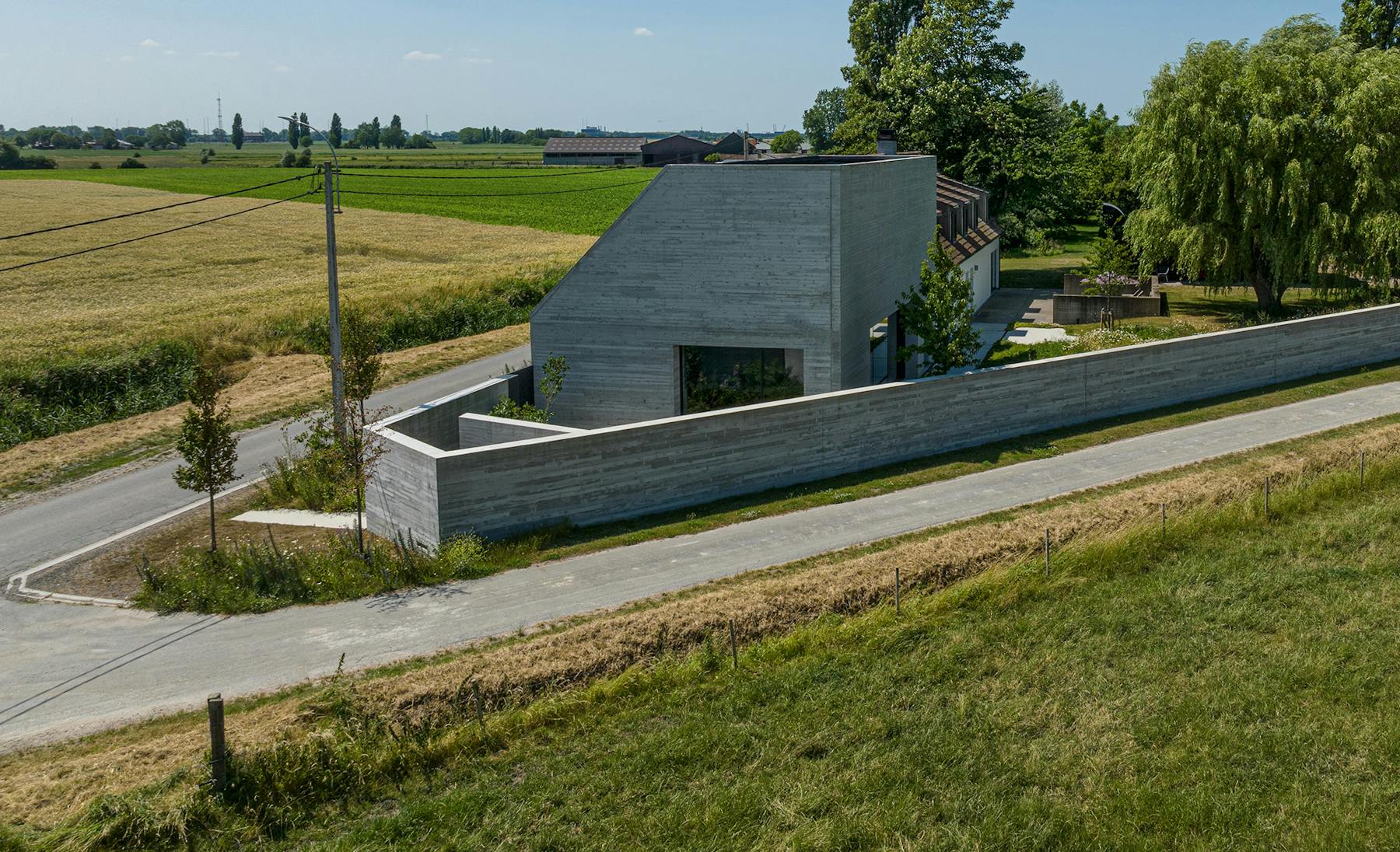
Like her family, Belgian Isolde Pringiers, daughter of industrialist Pierre Pringiers and artist Saskia Pintelon, shares with Glenn Sestig a contemporary minimalist style and a passion for concrete.
Where does your unrestrained taste for fashion, architecture, and design come from?
I.P. The effervescence of creation nourishes and excites me existentially. It’s almost a form of bulimia. I love that everything is beautiful when there is a strong, edgy,
and sharp concept.
Is fashion also a form of architecture?
I.P. It’s an architecture that I dress in. When I put on a piece of clothing, it becomes a mini-habitat for an evening, a day. The garment remains my refuge. I create a styling in the same way that I arrange an interior; it is a natural and fluid construction.
Glenn Sestig has completed three projects with your family that highlight contemporary minimalism, particularly the use of concrete.
I.P. The projects with Glenn are a blend of his ideas and mine. I insisted on using a minimal amount of materials to refine an idea and focus on volume. I particularly appreciate Glenn’s work when he manages to combine a strong architectural gesture with his restrained sense of color and materials.
Like architecture, can fashion aspire to timelessness?
I.P. I love wearing things from 20 years ago that haven’t lost any of their relevance, such as runway pieces by Martin Margiela or Comme des Garçons. Or I enjoy seeing how timeless pieces continue to inspire contemporary designers and creators: Marie-Adam Leenaerdt, Pieter Mulier at Maison Alaïa, Matthieu Blazy at Bottega Veneta, or Demna Gvasalia at Balenciaga.
Your father, Pierre Pringiers, an industrialist, and your mother, artist Saskia Pintelon, have been living in Sri Lanka since 1981 in a property designed by architect Tadao Ando.
I.P. This house is a universe in itself, like a village, a contemporary castle. The views of the bay and the Indian Ocean are breathtaking. The house is nestled in a lush, encroaching jungle. It’s a place where one could spend a week without leaving and without getting bored; it’s a house that speaks, where one can work and wander, host and rejuvenate.
Excess in three words?
I.P. Overflowing, superfluous, bad taste. But also pleasure, love, satisfaction.
